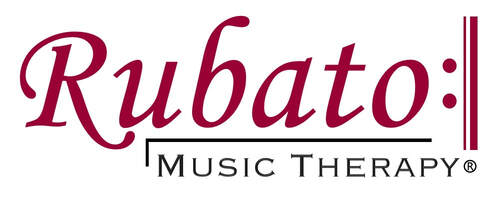Welcome to the Rubato Music Therapy Blog!
A resource for music therapists, music educators, and other professionals who work with individuals with intellectual disabilities, as well as their families and care providers.
|
Part 3 of this series explores pre-recorded, real-time, and other types of virtual services. There are many options out there besides the ones featured here; these are just the ones that I have experience using. Pre-Recorded ServicesPre-recorded videos of lessons or music experiences allow our student-clients to access services at a time that is convenient for them, with a limited amount of setup. This is a good option for student-clients who may be sharing devices with other family members, or who don't have a device with a camera or microphone. YouTube YouTube is the simplest and most accessible platform for viewing. However, opportunities for student-clients to interact are limited. √ Free √ Allows for live-streaming
Facebook Facebook is the most inclusive platform in terms of communication because it allows for multiple modes of interaction. However, student-clients need an account to participate. √ Free √ Allows for live-streaming
Flipgrid A lesser-known platform, Flipgrid is a virtual classroom where you can create a "grid" or group and post videos. Flipgrid allows you to easily setup accounts for your student-clients. However, opportunities for student-clients to interact are limited. √ Free X Does not allow for live-streaming
Real-Time Services**Well, sort of. You will experience some delay across all of these video-chat platforms. Real-time services allow us and our student-clients to respond to each other. Providing services at a specific times also helps to maintain a sense of structure and routine for all involved. In order of my personal preference: GROUP CLASSES & SESSIONS 1) Zoom
2) Google Meet
1:1 LESSONS & SESSIONS Most of these platforms also support groups, but I have only used them for 1:1 lessons and sessions. 1) FaceTime Many of my student-clients are already used to using FaceTime and are able to use it independently. For student-clients who need more assistance, you can initiate the class by calling them instead of expecting them to input a password or click on a link. Of course, you and your student-client will need Apple devices to use Facetime. FaceTime is my preferred platform at the moment for two reasons. 1) The video quality tends to be the best of all of these platforms.. 2) I can use a single device to video-chat with my students while simultaneously using my OnSong app for sheet music. All of these other platforms will cut my video feed if I open OnSong, and so I end up using my phone for video and my iPad for music. 2) Facebook Messenger This has been easy to use for student-clients with Facebook accounts. They can also communicate with me via text, photo, or video on there instead of contacting my personal phone. 3) Skype The video frequently cuts out (or my student-clients accidentally turn it off) - more than any other platform that I'm using right now. Skype's only redeeming feature for me is the popularity of its chat feature among my students when they want to message me. 4) Google Duo A few of my student-clients are using Google Duo. It is very easy to use because it's similar to using the phone app, where you can call someone or answer at the touch of a button. Unfortunately, you may find yourself accidentally recording (and sending) a message if you swipe the screen in the wrong direction. I have also experienced issues where Google Duo doesn't ring on my or my student-client's device. Other Some student-clients may not have the technology or assistance they need to participate. Others may not be interested in participating. For many families, this time is an opportunity to take a break from busy schedules and focus on spending time together. Here are some other ways that you can still reach out to these student-clients.
0 Comments
Your comment will be posted after it is approved.
Leave a Reply. |
AuthorKirstie Gallacher-Ang, MT-BC Archives
June 2020
Categories
All
|
Hours |
Call or Text |
|
|
Please contact for current availability.
|
(714) 364-7561
|
